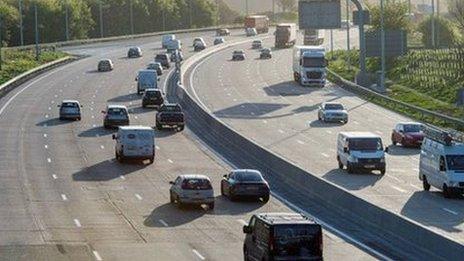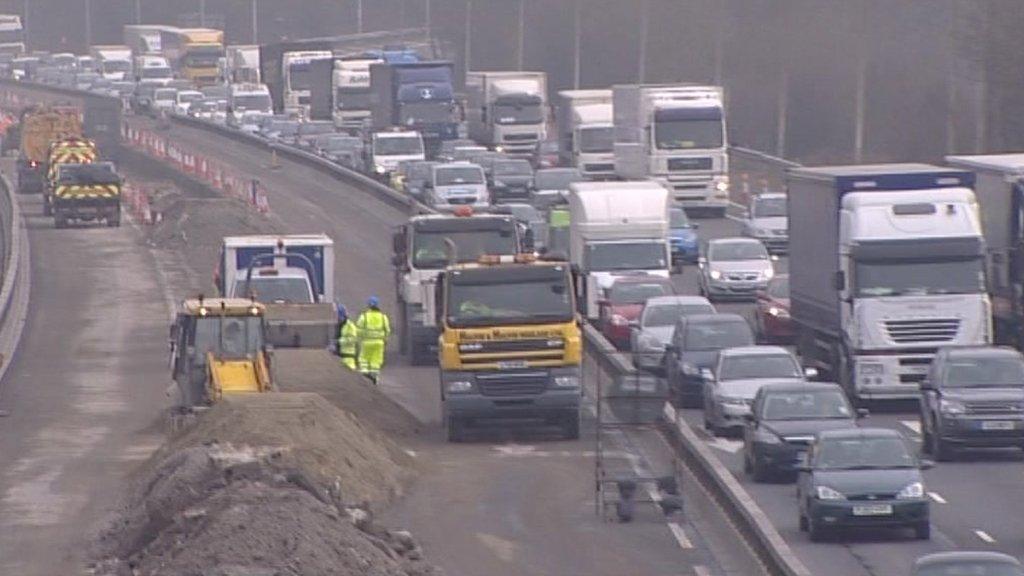M25 widening: Kent and Surrey 'smart motorway' opens
- Published
The hard shoulder has been converted into a permanent traffic lane
Work to widen the M25 between Kent and Surrey to create a "smart motorway" has been completed, with the hard shoulder now used as a traffic lane.
The Highways Agency said the move would improve journey times and provide a boost for business and the economy.
Smart motorways are where technology is used to manage congestion and control traffic speeds.
A section of the M25 in Hertfordshire opened as a smart motorway earlier this month.
Emergency access fears
Project manager Martin Potts said the £129m scheme, which began in May last year, had been completed six months earlier than planned.
"Basically, we're making use of that bit of pavement that has always sat there doing precious little and now we're using it for live traffic," he said.
Laura Woods, from the road safety charity Brake, said close monitoring of traffic would improve safety and was "an excellent idea", but she raised concerns about the loss of the hard shoulder both for motorists and the emergency services.
Mr Potts said drivers would need to comply with road signs and lane closures and a lane could be closed for emergency services to get through traffic.
He said stranded motorists who could not get to an emergency refuge area or slip road could get to a hard strip on the edge of the motorway, to get off the road and out of their car.
Paul Watters, from the AA, said 63% of members had said they would be more nervous on the new motorway, but added: "That may not be a bad thing if they're more attentive."
He said: "Following those message signs is absolutely crucial to the success of this scheme and I hope the majority of drivers will."
Emergency refuges
The Highways Agency has issued information to drivers on how to use different types of smart motorways, external.
The southern section of the M25 is an "all lane running" system with no hard shoulder and variable speed limits.
Drivers who need to stop are advised to use an emergency refuge area, motorway services, or leave at the next junction.
The redesigned motorway includes nine gantries, 10 refuge areas, 13 emergency telephones, 88 overhead signals, 33 verge-mounted signs and 38 CCTV cameras.
About 140,000 drivers use the motorway between junctions 5 and 7 for Sevenoaks and Redhill each day.
- Published14 April 2014

- Published9 April 2014

- Published10 September 2013

- Published31 July 2013
